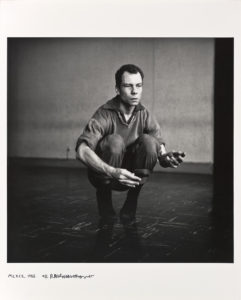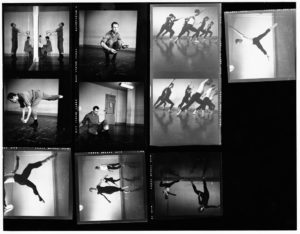Ownership History
San Francisco Museum of Modern Art, purchased from Douglas Elliott Gallery, San Francisco, 1983
Exhibition History
Rauschenberg: Photographs, Douglas Elliott Gallery, San Francisco, September 13–October 28, 1983.
Facets of the Collection: Portraits of Artists, San Francisco Museum of Modern Art, December 9, 1984–March 24, 1985.
Robert Rauschenberg: The Early 1950s, Corcoran Gallery of Art, Washington, D.C., June 15–August 11, 1991. Traveled to: The Menil Collection, Houston, September 27, 1991–January 5, 1992; Museum of Contemporary Art, Chicago, February 8–April 19, 1992; San Francisco Museum of Modern Art, May 14–August 16, 1992; Guggenheim Museum SoHo, New York, October 24, 1992–January 24, 1993.
Black Mountain College: Una aventura americana, Museo Nacional Centro de Arte Reina Sofía, Madrid, October 28, 2002–January 13, 2003.
This listing has been reviewed and is complete as of August 31, 2016.
Publication History
Rauschenberg Fotografia (Florence: Archivi Alinari, 1981), n.p. (ill.).
Rauschenberg Photographe (Paris: Centre Georges Pompidou, Musée national d’art moderne, Editions Herscher, 1981), n.p. (ill.).
Robert Rauschenberg Photographs (New York: Pantheon Books, 1981), n.p. (ill.).
Van Deren Coke, Facets of the Collection: Portraits of Artists (San Francisco: San Francisco Museum of Modern Art, 1984), 22 (ill.), 31.
Walter Hopps, Robert Rauschenberg: The Early 1950s (Houston: Houston Fine Art Press, 1991), 62, 73 (ill.). Traveled to all venues.
———, Robert Rauschenberg: The Early 1950s (Houston: Menil Foundation, 1991), 16, 33. Produced for the Menil presentation only.
Christos M. Joachimides and Norman Rosenthal, eds., American Art in the 20th Century: Paintings and Sculpture, 1913–1993 (Munich: Prestel Verlag, 1993), 97 (ill.).
Richard Gruber, Robert Rauschenberg: Through the Lens (Kansas City: University of Missouri, 1997), 13.
Vincent Katz, ed., Black Mountain College: Experiment in Art (Cambridge, MA: MIT Press, 2002), 157 (ill.).
Jerry Saltz, “Photos of the Artists as Young Men,” New York Magazine, September 11, 2011, (ill.). Accessed June 23, 2013. https://nymag.com/arts/art/features/rauschenberg-photographs-2011-9/.
This listing has been reviewed and is complete as of August 31, 2016.

